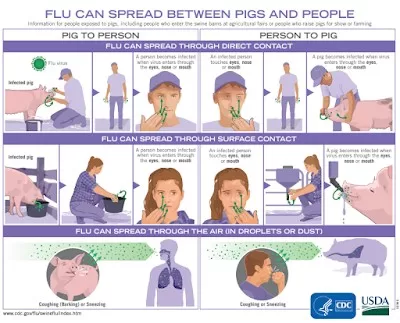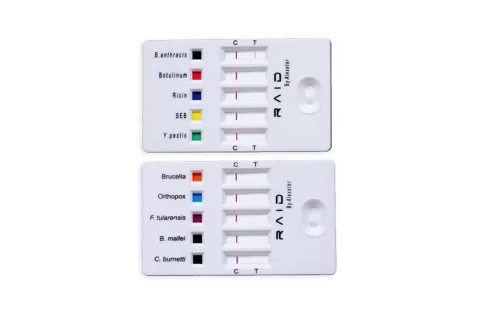Understanding the transmission dynamics of highly pathogenic avian influenza (HPAI) in birds is crucial for preventing outbreaks and safeguarding both wildlife and poultry industries. In recent studies conducted in South Korea, researchers have focused on avian influenza A(H5N1) and the A(H5N6) virus, examining how these viruses spread among wild bird populations. Effective wild bird surveillance has become essential in tracking the movement of these pathogens, particularly given the significant role of wild waterfowl in their transmission. Findings from the 2023–2024 surveillance period highlight the migration patterns that facilitate the spread of H5N1 and H5N6 viruses across regions. With the ongoing threats posed by South Korea avian flu, further insights into H5N1 H5N6 transmission dynamics are critical for formulating effective control measures.
The complex interactions that drive the spread of avian influenza among bird species, particularly those classified as highly pathogenic, require close examination. By investigating the epidemiology of viruses such as HPAI clade 2.3.4.4b, scientists aim to uncover the pathways through which these infections extend their reach and impact. This necessitates a robust framework for understanding avian ecology and migration, as these factors play a pivotal role in transmitting infections like A(H5N1) and A(H5N6). Moreover, the interplay between migratory patterns and environmental influences poses significant challenges that must be addressed through enhanced biosecurity measures. As surveillance progresses, the knowledge generated will be invaluable for preempting the consequences of future outbreaks.
Understanding HPAI Transmission Dynamics in Birds
The transmission dynamics of Highly Pathogenic Avian Influenza (HPAI) in birds are crucial for understanding how outbreaks occur and spread, particularly in regions like South Korea. Recent surveillance has evidenced that HPAI clade 2.3.4.4b, which includes strains such as H5N1 and H5N6, can quickly disseminate among wild bird populations. Wild waterfowl, especially ducks, serve as significant vectors due to their migratory nature and ability to host the viruses without showing signs of illness. The integration of geographic and host species data is essential to modeling these dynamics accurately, as it allows for a clearer picture of how these viruses transition across borders and environments, affecting poultry and potentially human health.
In South Korea, the introduction of these viruses from northern Japan has highlighted the interconnectedness of wild bird populations across regions. The spread of H5N1 and H5N6 variants underscores the importance of careful monitoring and wild bird surveillance to identify and manage outbreaks early. Moreover, understanding the bi-directional transmission routes between Japan and South Korea is critical for establishing effective biosecurity measures and public health responses. Enhanced surveillance programs can help in tracking the disease’s spread and contribute to the global efforts in controlling HPAI from wild bird reservoirs.
The Role of Wild Bird Surveillance in Avian Influenza Management
Wild bird surveillance plays a pivotal role in managing avian influenza outbreaks, particularly for viruses such as H5N1 and H5N6 that circulate among wild populations. Monitoring the health of wild birds and collecting virus samples is essential for early detection of HPAI infections. Through systematic surveillance, researchers can identify emerging strains and monitor their geographic spread, allowing for timely interventions and public health measures. In South Korea, heightened surveillance efforts from September 2023 to March 2024 have resulted in significant findings regarding the evolutionary patterns and transmission dynamics of these viruses.
Furthermore, understanding the ecology of wild birds aids in predicting potential spillover events that could impact domestic poultry. The collected data help trace how HPAI spreads within and between regions, informing risk assessments and mitigation strategies for both wildlife and agricultural sectors. Given the increasing incidences of HPAI outbreaks globally, maintaining robust surveillance programs is not just beneficial but necessary to safeguard both animal and human health from the consequences of avian influenza.
Impact of H5N1 and H5N6 Viruses on Poultry and Public Health
H5N1 and H5N6 viruses pose substantial risks to poultry industries and public health systems worldwide. These highly pathogenic strains can cause severe mortality in avian species, often leading to devastating economic impacts for poultry farmers. In South Korea, the recent outbreak of HPAI viruses has prompted immediate response measures, including culling affected flocks and enforcing biosecurity protocols. These measures are vital to contain the spread and minimize losses, but they also bring to light the broader implications for food security and trade in avian products.
The transmission dynamics observed among wild birds can directly influence the risk of avian influenza spilling over into human populations, particularly for individuals who come into close contact with infected birds or environments. The potential for zoonotic transmission raises important public health concerns, necessitating comprehensive strategies that encompass both wildlife monitoring and poultry management. Public health responses must adapt to the evolving dynamics of HPAI viruses, ensuring that healthcare systems are prepared to respond to any future outbreaks linked to H5N1 or H5N6 infections.
Strategies for Enhanced Avian Influenza Surveillance in South Korea
Implementing advanced surveillance strategies is crucial for managing avian influenza in South Korea effectively. Recent findings on HPAI transmission dynamics indicate the need for a multi-faceted approach that combines wildlife monitoring with data analytics. Employing Bayesian models that analyze host species and geographic information can provide insights into infection patterns and help track the paths of viral introductions, especially during critical migration periods.
Collaboration among governmental agencies, research institutions, and international partners can strengthen surveillance efforts, allowing for immediate response to outbreaks. Furthermore, educating poultry farmers and the public about the signs of avian influenza and biosecurity measures can significantly reduce the risk of infections. By investing in these strategies and enhancing wild bird surveillance, South Korea can better protect its agriculture and public health from the threats posed by HPAI viruses.
Epidemiological Trends of HPAI Variants in Wild Waterfowl
The epidemiological trends of Highly Pathogenic Avian Influenza variants, particularly H5N1 and H5N6, in wild waterfowl have shown significant shifts over recent years. Wild ducks, being a primary reservoir for these viruses, contribute to the ongoing circulation and evolution of HPAI strains. Understanding these trends is vital for predicting future outbreaks and implementing effective control measures. Analyzing infection patterns can reveal how HPAI is transmitted among birds and potentially to other animal populations.
Furthermore, the evidence of multiple introductions from other regions, such as Japan, highlights the importance of regional collaboration in monitoring and managing avian influenza. The spread patterns observed suggest that HPAI viruses are not just confined to single areas but are influenced by migratory routes and ecological interactions. Continuous research is essential for enhancing our understanding of these complex dynamics and improving the effectiveness of surveillance programs in mitigating the risks posed by HPAI variants.
The Ecological Impact of Avian Influenza on Bird Populations
The ecological impact of avian influenza on bird populations extends beyond immediate health effects. Following outbreaks of HPAI, such as those caused by H5N1 and H5N6, there can be significant shifts in population dynamics, particularly among susceptible wild bird species. The mortality associated with these viruses can lead to reduced genetic diversity and changes in community structures, thereby affecting the overall health of ecosystems.
Moreover, the cascading effects of HPAI on bird populations can disrupt food webs and the interactions with other wildlife species. A decline in certain bird populations may alter predator-prey relationships and the functioning of their habitats. Ongoing research is vital for understanding these ecological consequences and for developing strategies to mitigate the adverse effects of avian influenza on biodiversity.
Global Collaboration in Avian Influenza Research and Management
Global collaboration is essential in understanding and managing avian influenza, particularly since HPAI does not recognize borders. Countries experiencing outbreaks of H5N1 and H5N6 must share data and best practices to effectively combat the spread of these viruses. Joint efforts in research, monitoring, and response planning can lead to a more unified approach in addressing the challenges posed by avian influenza. Collaborative programs can help track virus mutations and transmission pathways, enabling earlier detection and interventions.
Moreover, international partnerships are crucial for providing resources and support for countries with limited capacity to handle outbreaks. Sharing expertise in veterinary medicine, wildlife management, and public health strategies can enhance global readiness for potential pandemic threats. By fostering a culture of collaboration and knowledge exchange, the global community can work together to protect avian species and safeguard human health against the impacts of HPAI.
Future Directions in HPAI Research and Surveillance
Future directions in HPAI research and surveillance will focus on enhancing our understanding of the ecological and evolutionary dynamics of avian influenza viruses. With emerging strains constantly being identified, it becomes crucial to develop innovative research methodologies that combine genetic analysis with ecological data. By understanding how these viruses mutate and spread among wild birds, we can better anticipate potential outbreaks and the viruses’ impacts on poultry and public health.
Additionally, advancing technology in surveillance systems, such as remote sensing and real-time data collection, can significantly improve monitoring efficiency. Incorporating these technologies alongside traditional monitoring methods will empower researchers and authorities to respond more effectively to avian influenza threats. The future of HPAI management hinges on adaptive strategies that stay ahead of the evolving landscape of avian influenza.
The Importance of Biosecurity in Poultry Farming
Biosecurity measures are critical in protecting poultry from avian influenza, particularly in regions where HPAI outbreaks are prevalent. The introduction of H5N1 and H5N6 viruses into farmed poultry can lead to severe economic losses and pose risks to food security. Implementing rigorous biosecurity protocols helps to minimize the risk of infection through mechanisms such as limiting contact between wild birds and domestic flocks, ensuring proper sanitation and disinfection of farming equipment, and monitoring the health of birds regularly.
Education and training for poultry farmers about the signs of avian influenza and preventative strategies are equally vital. Farmers must be equipped with knowledge to recognize early warning signs of infection and understand the importance of reporting any suspected cases immediately. By fostering a culture of biosecurity awareness, the poultry industry can work collectively to reduce the number of avian influenza outbreaks and ensure the safety of poultry products for consumers.
Frequently Asked Questions
What are the transmission dynamics of Highly Pathogenic Avian Influenza A(H5N1) in wild birds?
The transmission dynamics of Highly Pathogenic Avian Influenza A(H5N1) in wild birds involve the spread of the virus through various avian species, especially wild ducks, which serve as natural reservoirs. Recent studies in South Korea show that H5N1 viruses have been introduced from northern Japan and rapidly disseminated across multiple regions in South Korea.
How do H5N6 viruses transmit among wild birds in South Korea?
H5N6 viruses transmit among wild birds in South Korea through migratory patterns, particularly in wild waterfowl. Analysis in 2023-2024 identified that these viruses were likely introduced into southwestern South Korea and spread northeast, indicating a complex interaction between geographic movement and host species.
What role do wild ducks play in the transmission of HPAI viruses like H5N1 and H5N6?
Wild ducks significantly contribute to the transmission of HPAI viruses such as H5N1 and H5N6. They serve as primary hosts, allowing for the viruses to circulate among avian populations. Their migratory behavior facilitates the spread of the HPAI viruses across regions, as highlighted in surveillance studies conducted in South Korea.
What was the key finding from the wild bird surveillance conducted in South Korea regarding HPAI transmission?
The key finding from the wild bird surveillance conducted in South Korea indicated multiple introductions of HPAI clade 2.3.4.4b viruses, particularly H5N1 and H5N6, with extensive spread across the country. The study emphasized the importance of ongoing surveillance to monitor these viruses and mitigate the risk of future outbreaks.
How does the geographic spread impact HPAI transmission dynamics in birds?
The geographic spread plays a critical role in HPAI transmission dynamics in birds. The recent evidence of virus introductions from northern Japan to South Korea demonstrates that geographic proximity and avian migration routes can significantly influence the spread of H5N1 and H5N6 viruses among wild bird populations.
Why is enhanced surveillance essential for monitoring HPAI viruses in birds?
Enhanced surveillance is essential for monitoring HPAI viruses in birds to identify new virus introductions and effectively respond to outbreaks. Continuous monitoring can provide vital insights into the transmission dynamics of viruses like H5N1 and H5N6, helping to prevent future spread and protect both wildlife and domestic birds.
What techniques are used to study HPAI transmission dynamics in wild birds?
Techniques such as Bayesian discrete trait phylodynamic modeling are employed to study HPAI transmission dynamics in wild birds. This method incorporates geographic and host species information to analyze the spatiotemporal patterns of virus spread, allowing researchers to understand the introduction and dissemination of strains like H5N1 and H5N6.
What patterns were observed during the transmission of HPAI clade 2.3.4.4b viruses in South Korea?
During the transmission of HPAI clade 2.3.4.4b viruses in South Korea, patterns of bidirectional transmission between Japan and South Korea were observed, along with extensive regional spread of both H5N1 and H5N6 viruses. Such patterns underscore the interconnectedness of migratory bird populations and the significance of regional wildlife management strategies.
| Key Point | Details |
|---|---|
| Study Period | September 2023 – March 2024. |
| Cases Analyzed | 15 cases of HPAI virus infections detected in wild birds. |
| Viruses Isolated | 8 H5N1 and 7 H5N6 viruses. |
| Model Used | Bayesian discrete trait phylodynamic model for spatiotemporal dynamics. |
| Key Findings | H5N1 introductions from Japan, spread within South Korea. H5N6 was introduced in the southwestern region, spreading northeast. |
| Role of Wild Birds | Wild waterfowl, especially ducks, are significant in the virus transmission process. |
| Surveillance Recommendations | Enhanced surveillance is necessary to monitor HPAI viruses for future outbreak prevention. |
Summary
HPAI transmission dynamics in birds are of critical importance, as underscored by the findings of recent studies in South Korea. The research revealed significant transmission patterns of HPAI, showing how viruses like H5N1 and H5N6 spread across regions, facilitated by wild bird populations. This necessitates proactive surveillance measures to understand and mitigate the risks posed by avian influenza infections.
The content provided on this blog (e.g., symptom descriptions, health tips, or general advice) is for informational purposes only and is not a substitute for professional medical advice, diagnosis, or treatment. Always seek the guidance of your physician or other qualified healthcare provider with any questions you may have regarding a medical condition. Never disregard professional medical advice or delay seeking it because of something you have read on this website. If you believe you may have a medical emergency, call your doctor or emergency services immediately. Reliance on any information provided by this blog is solely at your own risk.








